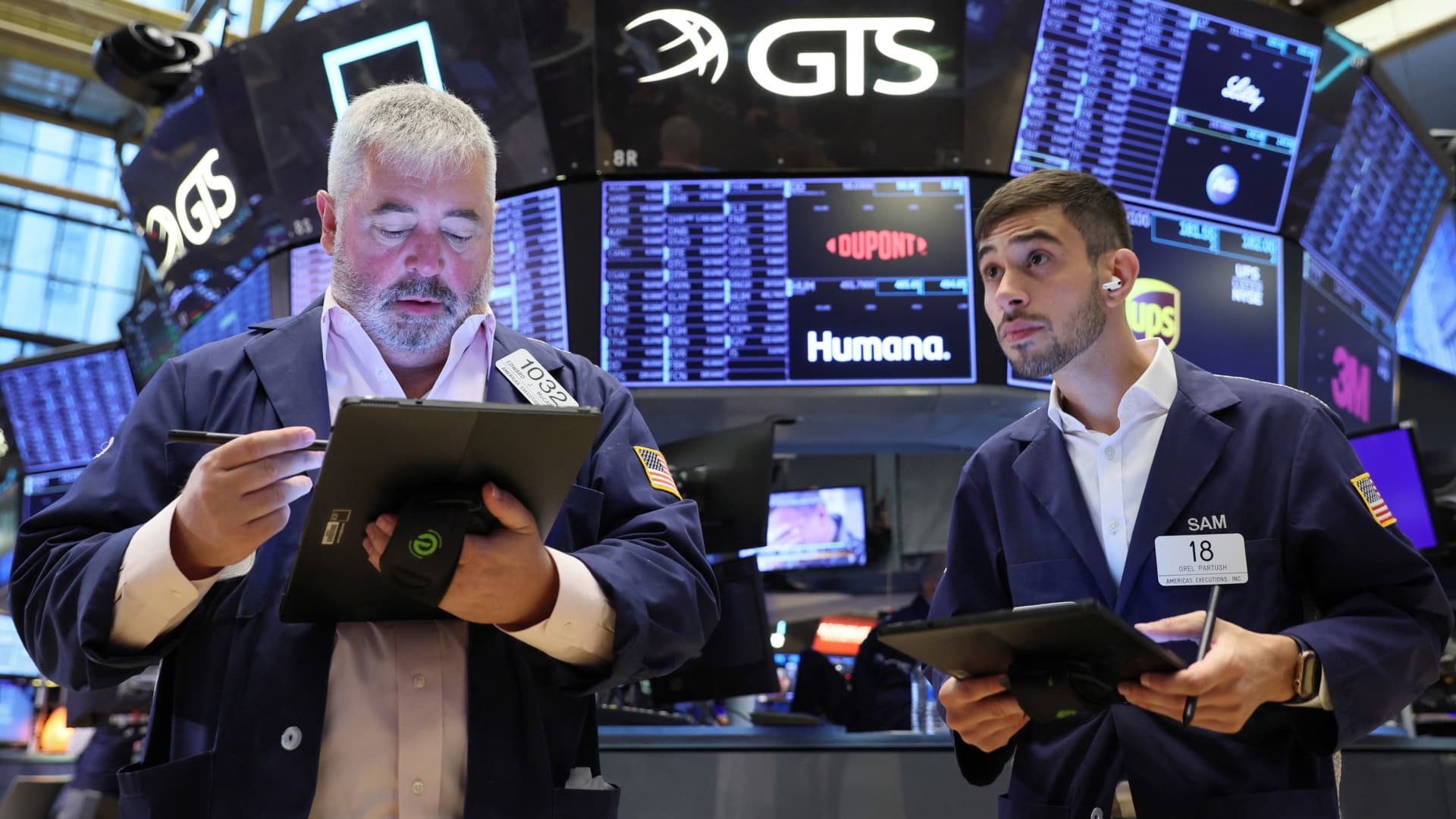
U.S. stocks fell on Monday, as the three major indexes came off a solid month of trading gains in July, leaving investors wondering once again if the bear market rally is fizzling out, or if this was just a slight blip in a larger rebound. July saw all three major indexes clock their best month since 2020, with the blue chip Dow Jones Industrial Average climbing 6.7% last month, while the broad-based S & P 500 added 9.1%. The tech-heavy Nasdaq Composite notched the biggest gain, rising 12.4% as investors flocked to snap up beaten-down tech stocks. Investors are also betting that the U.S. Federal Reserve may slow the pace of its interest rate hikes following a second-straight negative quarter for GDP in the U.S., while a better-than-expected second-quarter earnings season also contributed to the buoyant mood on Wall Street. “With 279 S & P 500 companies comprising 71% of index earnings have reported earnings, second quarter earnings per share is tracking a solid 3% beat,” Bank of America ‘s strategists, led by Savita Subramanian, wrote in a note on Sunday. “Overall, results were better than feared, especially with more above-consensus guidance than below, which was the biggest positive surprise,” she added. Does the rosy backdrop portend the bottom of the bear market? CNBC Pro takes a look at what Wall Street pros are saying. The bears UBS is convinced that July’s good showing is nothing more than a bear market rally. “We see this recent rally as a bear market pullback rather than a turning point for the markets. Fundamentally, the picture hasn’t changed. There is still a high level of uncertainty on how far inflation will fall this year and how the Fed will respond to any weakening in payroll data if inflation remains sticky,” Solita Marcelli, chief investment officer for the Americas at UBS Global Wealth Management, said in the August edition of the bank’s Investment Strategy Guide. “We will have two months of data on inflation and payrolls before the Fed’s next meeting, and a lot can change in that period of time,” she warned. Inflation has remained persistently high this year amid soaring energy and food prices. Consumer prices in the United States rose 9.1% in June from a year ago, while the personal consumption expenditures price index — the Fed’s primary barometer for inflation — made its highest 12-month gain in more than 40 years. Bank of America’s strategists have made a similar assessment. “We remain of the view this is a bear rally,” Michael Hartnett, the bank’s chief investment strategist, wrote in a note on July 28. Subramanian, head of equity and quantitative strategy at BofA Securities, agrees. In a note on Sunday, she said the bank’s “bull market signposts” indicate it is “premature” to call a bottom, while earnings per share estimates also remain too high. “During the prior five recessions, the S & P 500 bottomed after estimates were revised down, except in 1990 when forward EPS remained flat when the market bottomed. But today, estimate cuts are just starting and forward EPS is still up 7% since the market peak,” Subramanian said. “Moreover, bear markets always ended after the Fed cut, which likely is at least six months away,” she added. Barclays strategist Emmanuel Cau is also “unimpressed” by the rally. “Markets are rallying on the hope the Fed can prevent a hard landing, brushing off the risk that the slowdown accelerates and causes further headwinds to corporate fundamentals. Q2 earnings are not the disaster some were predicting, but mixed guidance offers little comfort. This rally feels unsettling to us, we would fade it,” he said on Friday. The bank noted that risk assets have rallied on “every single” Fed meeting since March but eventually sold off after. “We believe that will happen again this time. Financing conditions are tightening quickly both in the US and globally, and economic growth is well below trend,” Barclays strategist Bradley Rogoff wrote in a separate note on July 29. The lone bull While most market watchers appear unequivocally bearish, a lone bull stands out. The volatile bear market that has rocked stocks for the last few months is over, Fundstrat Global Advisors’ Tom Lee declared . The firm’s head of research said in a note to clients that recent events signal that the “bottom is in” and that stocks could hit new highs by the end of the year. “This is the August 1982 moment, bottom is in, but Fed is two months away from a pivot,” Lee wrote. He was referring to the bear market bottom of 1982, which came about after then Federal Reserve Chairman Paul Volcker raised the federal funds rate from 11.2% to 20% in a series of sharp interest rate hikes to combat inflation. But the market staged an astonishing comeback to recover to its prior peak in just 68 days , or a little more than two months. Lee said stocks could hit new highs by the end of the year, with the S & P 500 breaking back above 4,800. The benchmark hit an intraday record of 4,818.62 in early January. All eyes are now on Friday’s nonfarm payrolls report coming out of the United States, which should provide greater clarity on the strength of the labor market — a closely watched indicator that could determine the Fed’s next course of action at its September meeting. Slated to report earnings this week are 148 S & P 500 companies. — CNBC’s Samantha Subin contributed reporting
